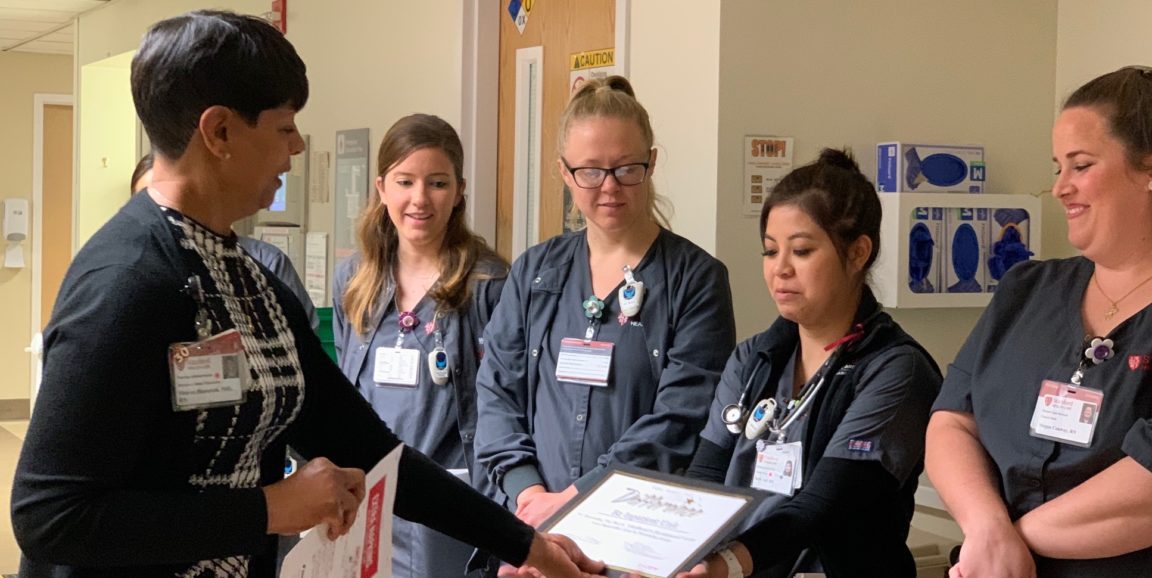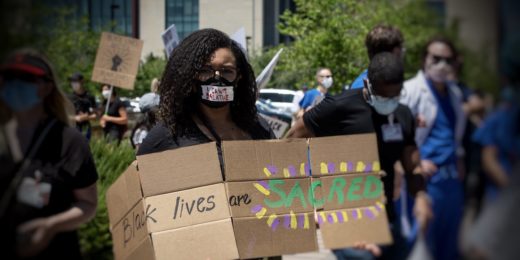As a teenager, Sharon Hampton, PhD, a nurse leader at Stanford Health Care, wanted to be a biology teacher. But her mother, who worked at a hospital, said, "No, you're going to be a nurse."
Hampton's mother, a Black woman who began her career working in a hospital linen room, saw that non-white patients received different care than white patients did, a discrepancy we now call health care disparities.
"Those weren't the buzzwords then, but my mother witnessed patients being treated differently," Hampton told me. "I remember her coming home and telling me about it. She wanted me to become a nurse so I could address the problem."
Having joined the profession already aware of unequal treatment, Hampton added, "It has remained something I've been interested in throughout my career."
Role model for underrepresented nurses
I spoke with Hampton soon after she started a new position, as associate chief nursing officer. She told me that she's thrilled in that position. "It's such an honor," she said. "Another glass ceiling has been shattered."
"I've had Black and brown nurses say that now they feel like they have the same opportunity," she added. "It was just so humbling to me that they were in tears, so happy to see diversity in leadership."
Hampton grew up as one of eight children in Milpitas, California, and earned her bachelor's of nursing at San José State University. She was hired at Stanford Hospital in 1988 to work on the same unit where her mother was working as a secretary.

Charlie Bowie
"We worked together for seven years, and she bossed me around on the floor like she did at home," Hampton told me, though she added, "My mom's my hero. She taught me to lead with humility, courage and integrity."
In 2006, she moved to Texas, where she worked as a nurse manager at MD Anderson Cancer Center and earned a PhD in nursing science -- a degree less than 1% of nurses hold.
"I decided to get a PhD because I was really interested in health equity and I was aware of the lack of research regarding provider contribution to health disparities," she said. "Nurses spend the most time with patients, giving them the greatest opportunity to make a difference in care and outcomes."
Hampton returned to Stanford Health Care in 2014, taking a job as a director of clinical operations.
Keeping the personal touch at Stanford
Now that she's the associate chief nursing officer, Hampton focuses on inpatient nursing, ensuring that nurses deliver high-quality and equitable care.
She plans to visit all 33 inpatient units at Stanford Hospital regularly. "I really want to keep that personal touch. The nurses want to see their leaders and know that we're here for them."
She's also planning to continue her research looking at the effect a patient's race and gender, as well as a provider's race and gender, have on care decisions.
"My health equity mission is not just about improving care for Black and brown patients, but for improving care of all the marginalized and disenfranchised patients, including LGBTQ patients, non-English-speaking patients and under-resourced patients," she said. "There are so many ways we can improve care just by getting to know the populations we serve."
When she's not working, Hampton told me, she relaxes by writing in her journal, penning short stories and poetry, and spending time with her family of six children and four grandchildren.
As we wrapped up our conversation, Hampton pulled out a quote from diversity, equity and inclusion strategist Arthur Chan. "Diversity is a fact," she read. "Equity is a choice. Inclusion is an action. Belonging is an outcome."
When she first heard that quote, Hampton said, "I thought, Wow, that sums it up perfectly! By looking at diversity, equity and inclusion, you promote the belonging for all."
Top photo by Liz Borgueta of Hampton sharing an award with nurses before the pandemic; middle photo by Will Hampton






